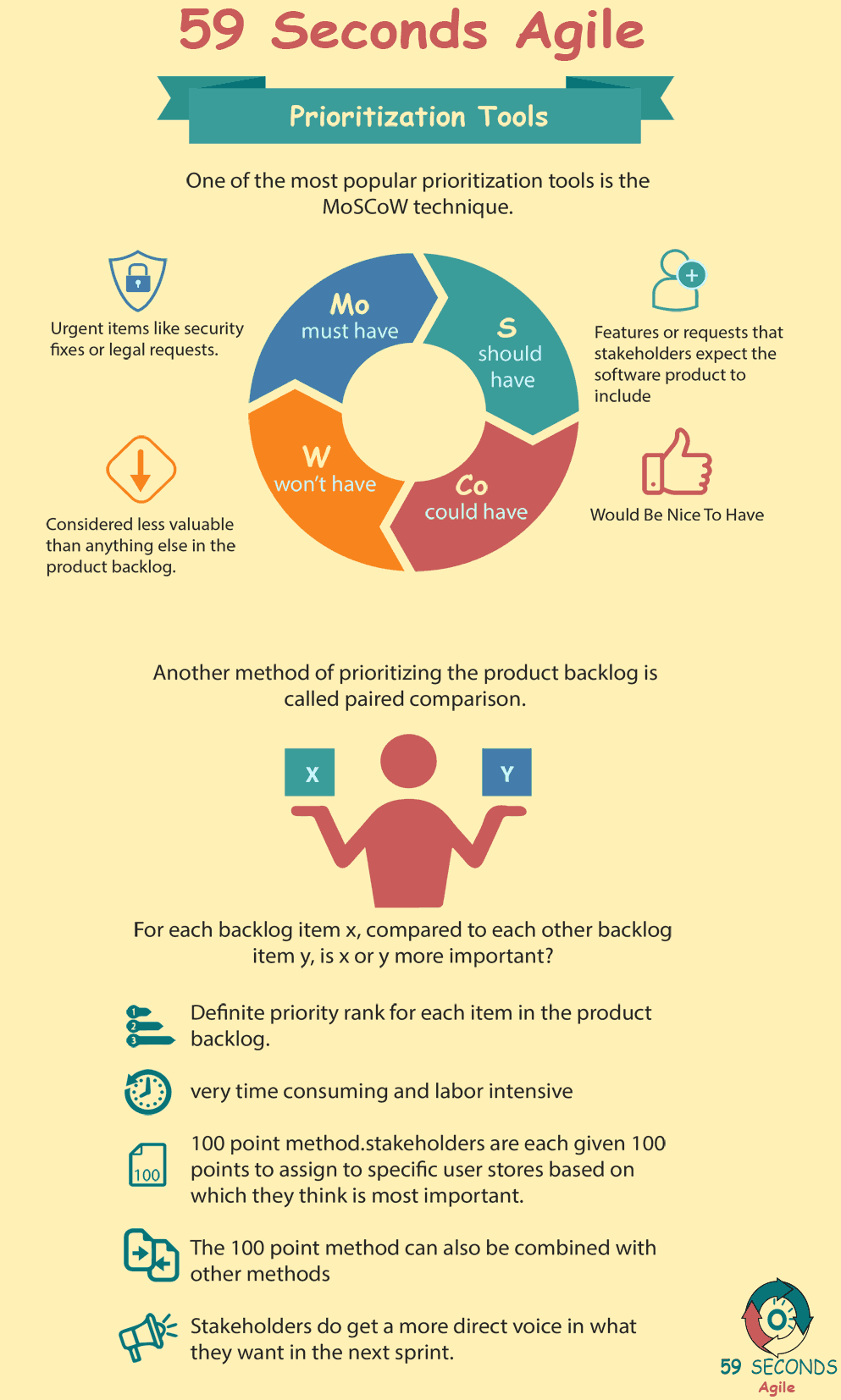
Product Backlog Prioritisation for Scrum Masters – Part 2
Priority Factors
Dependencies refer to product backlog items that rely on other items in order to work properly. A user cannot assign medication to a patient without the ability to add and update patient information. In a point of sale system, users cannot view transaction history for the day if this history isn’t saved, to begin with. Therefore, the Scrum Team must plan these dependencies in advance.
Prioritization Tools
For particularly large projects, there can be numerous items in the product backlog. Deciding which items are more or less important than others is a difficult task for such projects. Fortunately, there are tools that the Scrum Team can use to aid the process of prioritization.
One of the most popular prioritization tools is the MoSCoW technique. This mnemonic gives a reminder of four categories that product backlog items can fall into. Every backlog item is either a “must have,” “should have,” “could have,” or “won’t have this time.”
Urgent items like security fixes or legal requests are “must have” features. If these items are not included in the next sprint, there could be serious consequences. “Should have” items are features or requests that stakeholders expect the software product to include. In the absence of “must have” items, “should have” are the features that stakeholders could most use. “Could have” items would be nice to have, but are not necessarily required. “Won’t have this time” are the bottom level of product backlog items. These items are considered less valuable than anything else in the product backlog. Other backlog items are more important and would offer greater benefit and value to the stakeholders.

Prioritization Tools
Another approach of prioritizing the product backlog is called paired comparison. As the name implies, a paired comparison is the process of examining every item in the product backlog and comparing them to every other item individually. For each backlog item x, compared to each other backlog item y, is x or y more important? This gives the Product Owner a definite priority rank for each item in the product backlog. The problem with the paired comparison approach is that it can be very time consuming and labor intensive.
A prioritization approach that works better for involving stakeholders is the 100 point method. In this approach, stakeholders are each given 100 points to assign to specific user stores based on which they think is most important. By totaling or averaging the points on each item, the Product Owner has a definite list of what the stakeholders find most valuable. The 100 point method can also be combined with other approaches. However, with this approach, stakeholders do get a more direct voice in what they want in the next sprint. The Scrum Master assists the Product Owner with these prioritization sessions and ensures that the scrum processes are being followed.
Our Favourite Agile Books
We found these books great for finding out more information on Agile Scrum:
The Product Owner and Scrum Master clearly have an important job in prioritizing the product backlog. Despite the size of this responsibility, the Product Owner does have tools and approaches to apply. By using these tools appropriately, the Product Owner can produce a product backlog that contains items ranked by their priority and allows the rest of the Scrum team to develop the product and features.

